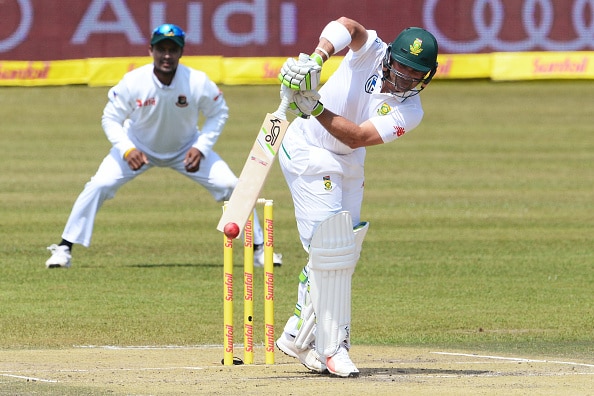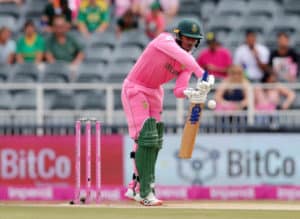This was ammunition for all those trying to hasten the end of five-day Test cricket as we know it, writes GARY LEMKE.
Day one of the Test between South Africa and Bangladesh at Senwes Park in Potchefstroom saw Bangladesh win the toss and insert the hosts. By the end of the 90 overs, South Africa had reached 298-1.
Fabulous batting perhaps, with Dean Elgar moving to 128 not out, Aiden Markram making an eye-catching 97 on debut and Hashim Amla continuing his Sunfoil Series form with an unbeaten 68? No. Simply batting, which is required if you’re going to call yourself an international cricketer.
A pitch as flat as some parts of the N1, aided by baking sunshine and toothless Bangladesh bowlers – to call it an ‘attack’ would be gross misuse of the word – allowed South Africa to seize control. And all the action taking place in front of a few dozen spectators.
You also have to wonder what Bangladesh captain Mushfiqur Rahim was thinking when he won the toss under clear skies and asked Faf du Plessis’ troops to bat. Amla himself might have had a look at the pitch and reckoned he could spend another hour or two without the pads on, given the lifeless nature of the track.
However, Bangladesh have been here before, so to speak.
The last time they toured South Africa, in 2008-09, they won the toss in the first Test in Bloemfontein and put the hosts in. By the end of the first day, South Africa had reached 299-1, with centuries for Graeme Smith and Amla. South Africa went on to win the match by an innings and 129 runs. In Potchefstroom in 2002, South Africa won by an innings and 160 runs.
That would be the way to think this first Test is heading. The selectors picked a long tail, with Andile Phehlukwayo making his debut at No 7, followed by Keshav Maharaj, Kagiso Rabada, Morne Morkel and Duanne Olivier, so there is plenty in the bowling department to test Bangladesh, even on a track that is as flat as this one.
Despite the flatness of the pitch – highlighted by the very few times the ball beat the bat – it did show signs of keeping low. The surface wasn’t breaking up and the ball wasn’t ‘exploding’ through the surface, nor was there any turn on offer, but when Bangladesh come out to bat they may find the South African bowlers too much for them, and I reckon we might see a few lbws.
It was a day of very few talking points, and tellingly the wicket to fall was a run-out, with Markram being called for a non-existent signal by Elgar and then being sent back, cruelly falling three runs short of a century on debut. Those who follow South African cricket will be quick to observe that ‘run out’ is too common a feature on the scoreboard, and it’s one area that new coach Ottis Gibson will want to address.
Temba Bavuma is pencilled in at No 4 on the scorecard, scheduled to come in at the fall of the next wicket.
And this is where South Africa need to be more flexible. Du Plessis should surely take the initiative and promote himself from No 5 to No 4. Basically, there are already 300 runs on the board, and despite the ball still being only a couple of overs old the captain should be looking to fill Bavuma’s boots.
In fact, there’s even a case to suggest that Quinton de Kock should come to the crease before Bavuma, as he has the ability to really accelerate that scoreboard. It’s no slur on Bavuma as a batsman, it’s just that a ‘horses for courses’ approach should apply.
South Africa must be ruthless. Bat aggressively, push on quickly and then get Bangladesh in. Bowl them out and then bowl them out again – just like they did nine years ago – and then move on to the next Test in Bloemfontein.
Just a heads-up: the pitch in Bloemfontein is another flat-belter. At some stage, we need to talk about the state of pitches around the country, whether it’s got to do with climate change or not, but there are a few of them that every batsman would want to dig up and carry around with them.
For Markram, he must have exactly those thoughts about Senwes Park. Yet the exciting young opening talent will know that there are going to be much tougher examinations ahead for him than facing pie-chuckers in Potchefstroom and Bloemfontein.
Photo: Lee Warren/Gallo Images





